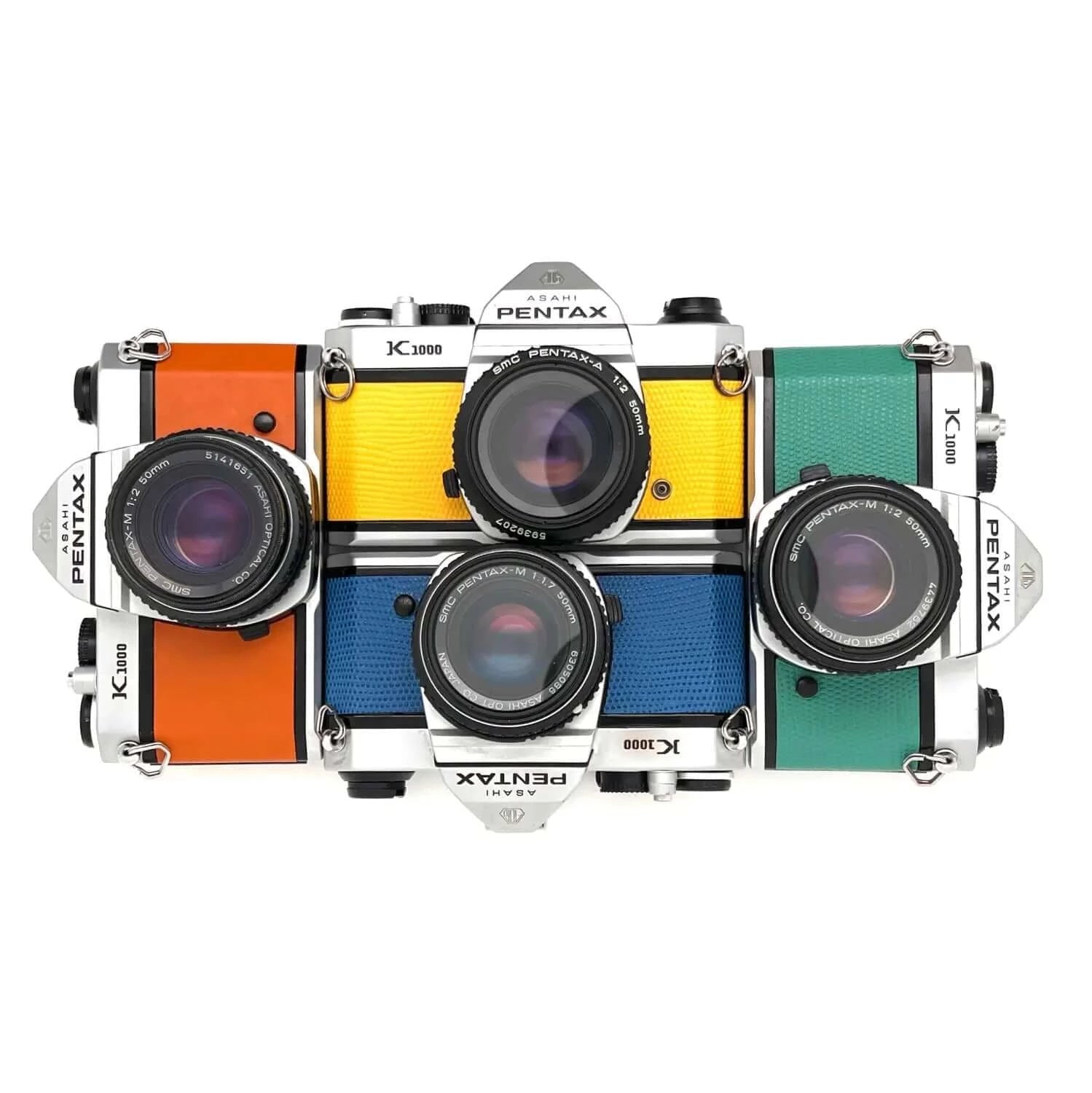
Renacimiento de la Fotografía Analógica: 9 Razones por las que Está Volviendo a la Moda
Compartir
Renacimiento de la Fotografía Analógica: 12 Razones por las que Está Experimentando un Fuerte Resurgimiento en 2025
¿Tienes curiosidad sobre el regreso de la fotografía analógica? Resolvemos tus preguntas frecuentes
-
¿La fotografía en película sigue siendo relevante en 2025? ¡Sí! Está prosperando con nuevas películas, cámaras y una apasionada comunidad global.
-
¿Todavía se fabrican películas de 35 mm, 120 o gran formato? Absolutamente: Kodak, Ilford y otros lanzan nuevos rollos de forma regular.
-
¿Es esto solo una moda pasajera como la Lomografía? No, es un movimiento sostenido, respaldado por el aumento de ventas y cámaras re-fabricadas.
-
¿Se considera Instax fotografía analógica? No exactamente: es instantánea, mientras que la fotografía con película tradicional implica un proceso de revelado manual.
-
¿Dónde puedo comprar cámaras de película confiables? Consulta vendedores de confianza en eBay o Etsy para modelos reacondicionados, o explora cámaras nuevas como la Pentax 17.
¿Nuevo en el cine? Sumérgete en nuestra guía para principiantes: Cómo empezar en la fotografía analógica.
La fotografía analógica no solo se mantiene, sino que está resurgiendo con fuerza. Cámaras vintage como la Canon AE-1 o la Nikon F3 alcanzan precios superiores a algunos modelos profesionales digitales SLR, con eBay reportando aumentos anuales del 25-50 % en modelos muy demandados. Los aficionados están enganchados, y los profesionales están incorporando el film en sus servicios premium para bodas y retratos, ofreciendo resultados atemporales que encantan a los clientes.
Algunos lo llaman nostalgia, como los discos de vinilo antes de que superaran en ventas a los CDs en 2022. Pero los números no mienten: el resurgimiento del cine es real. Las ventas de Kodak en 2024 aumentaron un 20 % en películas fotográficas, y los fabricantes están apostando fuerte. Kodak revivió Ektachrome en 2017 y amplió Gold 200 al formato 120. CineStill lanzó 400D en 2022, seguido por Kentmere 100/400 en 120 de Ilford. ORWO Wolfen presentó las películas en color NC500 y NC400, y Harman Photo lanzó Phoenix 200 en 2023, actualizándola a la Versión II en julio de 2025 según los comentarios de los fotógrafos. Nuevas cámaras, como la reedición de Leica M6 (solo cuerpo por $5,900) y el éxito de Pentax en 2024, la Pentax 17, señalan la confianza de la industria.
línea, el movimiento prospera: el subreddit r/analog de Reddit cuenta con 1.5 millones de miembros, y canales de YouTube como Negative Feedback (más de 500K suscriptores) alimentan el entusiasmo con tutoriales. Esto no es una moda pasajera, es un resurgimiento global con fuerza duradera.
¿Qué es la fotografía analógica?
La fotografía analógica utiliza cámaras con película fotosensible (35 mm, formato medio 120 o gran formato 4x5). Se expone la película a la luz y luego se revela químicamente para crear negativos o diapositivas, que pueden imprimirse en un cuarto oscuro o escanearse digitalmente. A diferencia de las vistas previas instantáneas del formato digital, la película requiere paciencia y habilidad. Los formatos instantáneos como Instax son diferentes debido a su naturaleza de auto-revelado; aquí nos centramos en el proceso clásico de la película.
EJEMPLOS DE FOTOGRAFÍA ANALÓGICA
12 razones por las que la fotografía analógica está resurgiendo
1. Autenticidad y Credibilidad
2. Calidad de imagen mejorada
3. Atractivo Estético Inigualable
4. Terapéutico y Consciente
5. Impresiones hechas a mano
6. Más sencillo que nunca
7. Durabilidad y Rentabilidad
8. Exclusividad para Momentos Especiales
9. Retratos auténticos
10. Nostalgia y vibras vintage
11. Comunidades en línea prósperas
12. Escapar de la fatiga digital
Abordando a los escépticos: ¿Realmente vale la pena el cine?
Flujos de trabajo híbridos: lo mejor de ambos mundos
Mezcla la magia del cine con la facilidad digital:
Consejos para Comprar: Comienza con Inteligencia
¡Únete a la Revitalización del Cine!











19 comentarios
As an old guy, it’s somewhat shocking to read an article about film cameras that includes the words “once upon a time…” Seriously, though, as a life-long camera collector and photographer who was slow to fully accept the transformation from film to digital, I can’t see why anyone would want to deal with the process and cost of shooting film now that digital is mainstream. Vinyl records regained popularity due to some strong aesthetic benefits they give the listener. But, I’m hard-pressed to see any benefit in shooting film vs. digital, especially considering the cost of film, processing, etc. I do still have a closet full of film Nikons and Pentaxes, but never shoot with any of them.
I’ve heard it before but really how many film photos have survived to this day? People throw away negatives because they don’t know what to do with them and photos get lost or damaged. Even if only 1% of digital photos survive from the number of photos taken I think it will be more than film photos. Really with proper backup, cloud storage, and the internet never forgetting there’s no reason for good photos to ever get lost. If you really want longevity then laser print your photos or if you’re nostalgic store them on CDs. Even if it gets damaged in fire it’s still theoretically possible to retrieve data from undamaged parts.
Except for perhaps technicolor there’s probably not a single film effect that can’t be achieved with digital and you can experiment more to get the desired effect. I don’t think any of the arguments hold any water. Photography, whether it’s digital or film, only gives you an approximation of the world and there’s never any correct photo so one thing I’ve learned it that there’s never a “better” photo and only one you like or don’t like.
Film, digital, it doesn’t matter. It is like painting with oil or acrylic paint, they are different mediums that produce the same end result. An artist will use that medium to create art not compare them against each other. On the other hand tech types, engineers and non artistic people are caught up in specs, numbers etc. I grew up with film and now take photos with a Ricoh GR3. To me it is just the same as shooting with film, the end result is a print. Neither is better than the other. Stop with this nonsense.
Interesting, although I see few people out and about with cameras these days. Prior to the digital upswing amateur photographers were everywhere but I only see the odd one or two now. I still have loads of fim gear, I did manage to offload most of what I had including medium format equipment by 2010 and I’m glad I did because not being very affluent, digital is more affordable. Can’t see me going back to film for any reason but my HND in Photography was attained using film and darkroom processing.
Film offers some technical qualities that cannot be achieved with a digital sensor (but can be cancelled if prints are digitally printed)
-Alias isn’t present as the medium is analog
-Moire is generally not present in film
-Resolution can be equivalent to high end digital
-No legacy issues with storage format/hardware
-Image capture can be done without batteries
Etc.